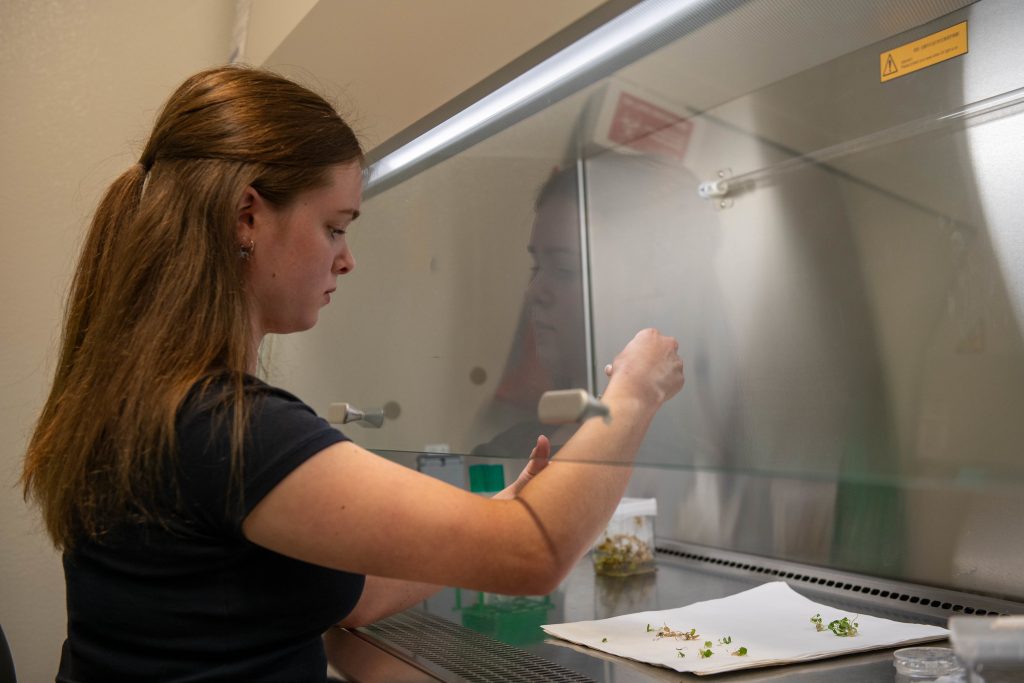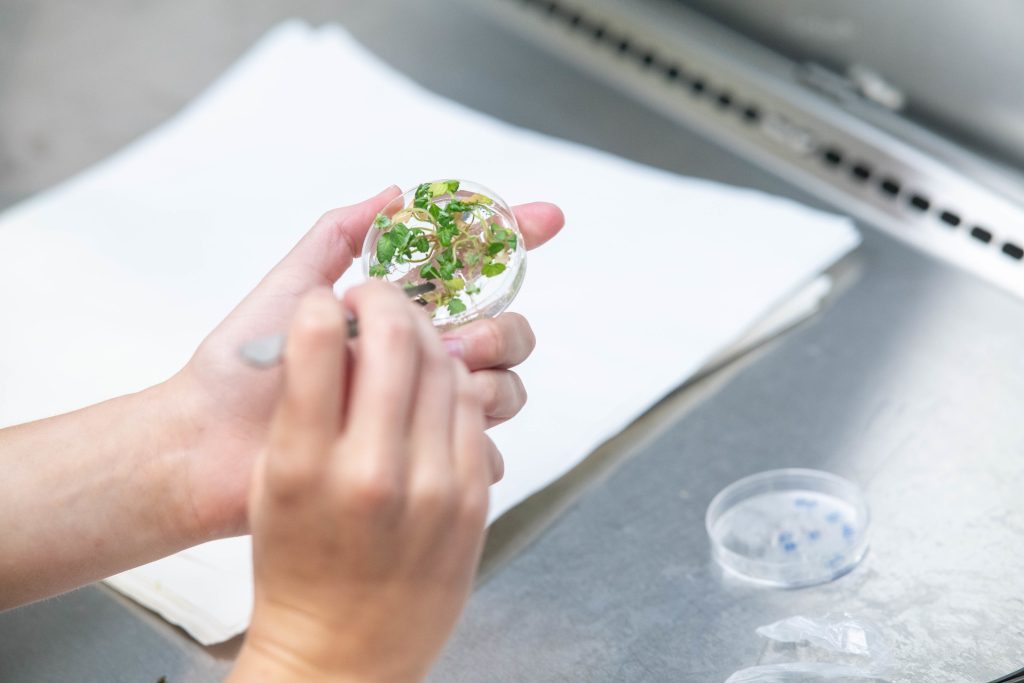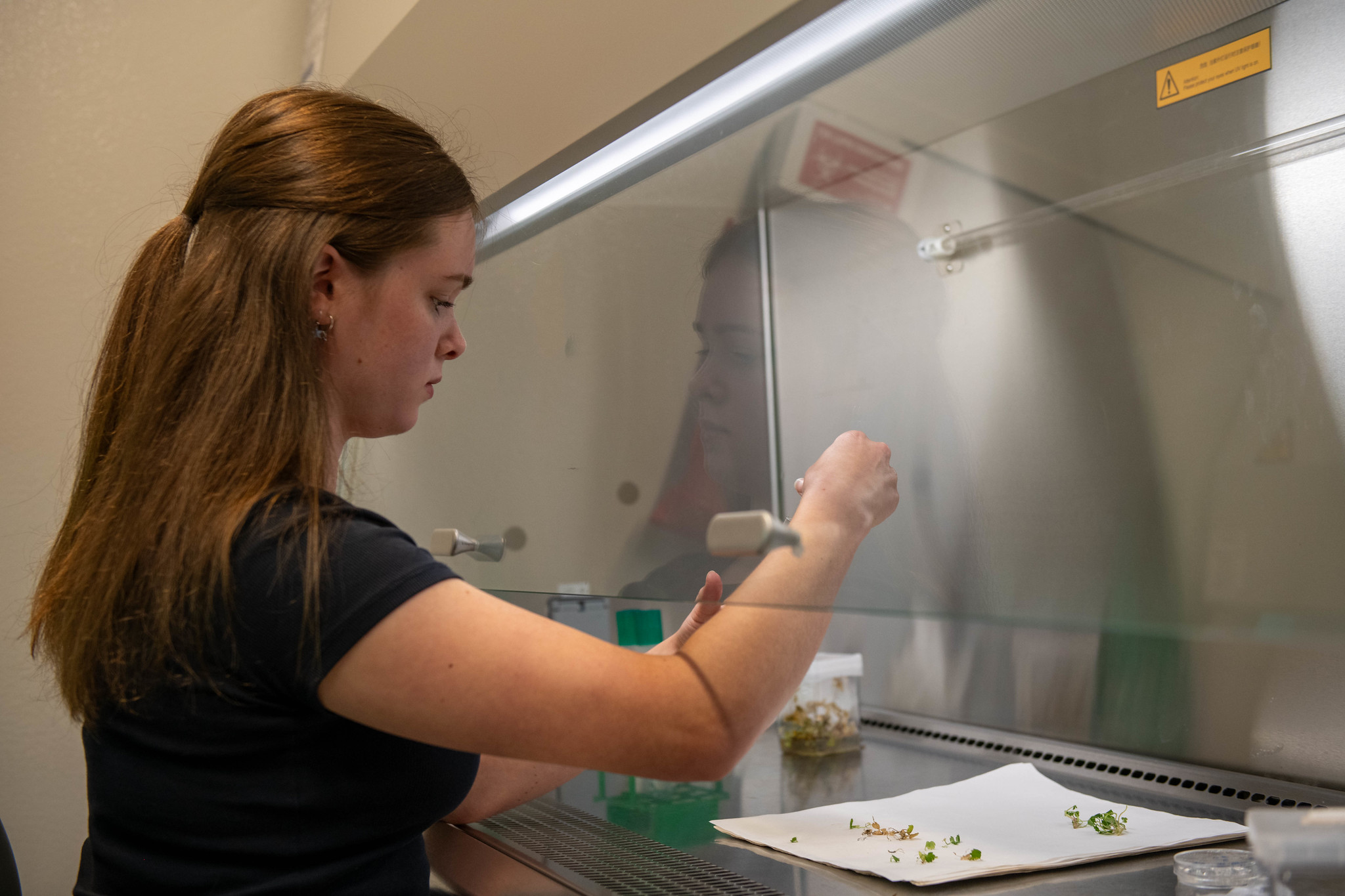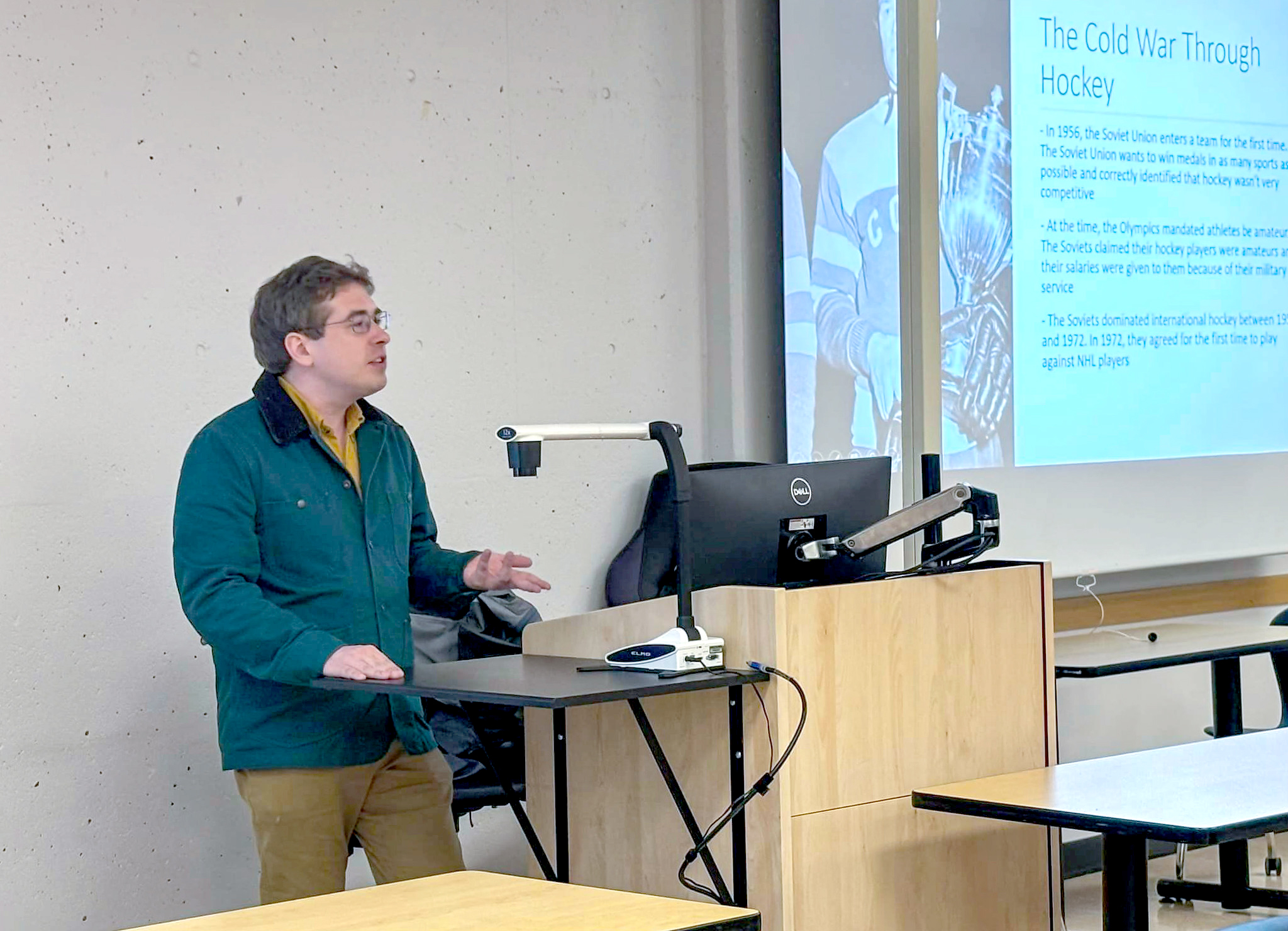Sweet relief: UFV research shows melatonin helps strawberries handle the heat

For humans, melatonin is useful for getting to sleep. For strawberry plants, it may be a tool for survival in a warming world.
UFV student researcher Emily Foster recently finished a study that found melatonin reduces heat stress in alpine strawberries, increasing the resilience of a native crop. Melatonin is a hormone produced by humans and plants. Working in the Berry Environmental Resilience Research & Innovation (BERRI) Lab on the UFV Chilliwack campus, Emily supplemented melatonin for a pair of alpine strawberry cultivars grown in tissue culture.
“They’re known to be resistant to cold, but not heat,” she explained. “The melatonin decreased the heat stress in both cultivars.
When a strawberry plant is stressed, you may see yellow or brown spotting on the leaves, and you’ll get less growth. Melatonin is an antioxidant, and a natural growth regulator that protects developing plant tissues. For her strawberries, Emily found that it reduced stress levels, therefore boosting survival rates significantly.
“Anything 40°C and up kills them quickly,” Emily said. “I looked at 35°C because we have reached that heat in summer in the Fraser Valley, and we saw just a 30 per cent survival rate at that temperature for the plants that didn’t have melatonin.
“When we added melatonin, we saw a 56 per cent survival rate in one cultivar and 83 per cent in the other. I found it curious that one was better at reducing stress and intend to look further into it this fall.”
The moment she realized her study had produced an interesting result was one she’ll never forget.
“Pulling them out after four weeks of heat stress, I thought I maybe had something and that was exciting, but I still wasn’t sure,” Emily said. “When I later checked for proline (amino acid) content, which is an indicator of plant stress, the strawberries with the highest stress had no supplemented melatonin. Later, I was at home in pajamas running statistics on the computer that confirmed my findings and I got up, jumped up and down and went, ‘Woohoo!’”

Emily presented her data at the Canadian Society of Horticulture Science/Canadian Society of Agronomy annual meeting in Kelowna in June, placing third in a graduate poster presentation competition. She was the only undergrad in attendance, challenged with explaining her work to 220-plus delegates, all of them experts in the field.
“I had a lot of people poking into my statistics, so thankfully I reviewed everything very well,” she said with a laugh. “I’ve had the opportunity to present research to my peers and faculty at UFV, who may know some of what I was doing. But these were people who know exactly what’s going on and probably know more than me. I was a little sweaty and definitely nervous, but it was a lot of fun.”
Emily’s was supported to attend through Lauren’s NSERC Discovery Grant Funds and Office of Research Student Presentation Grant.
Dr. Garry Fehr, UFV’s Associate Vice-President, Research and Graduate Studies, says Emily’s experience is part of what makes the university special, providing undergrads the opportunity to learn through meaningful research activities.
“The results of student research go beyond the student learning and it can have significant impacts on the region’s economy, environment and quality of life,” he said.





